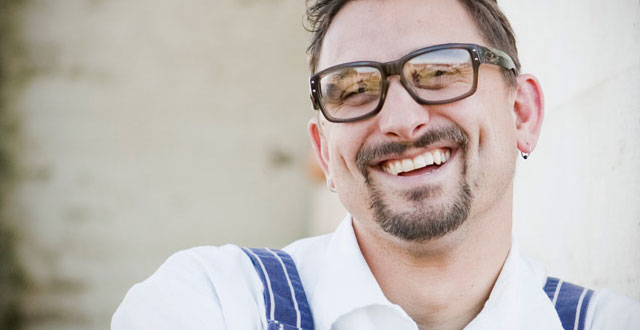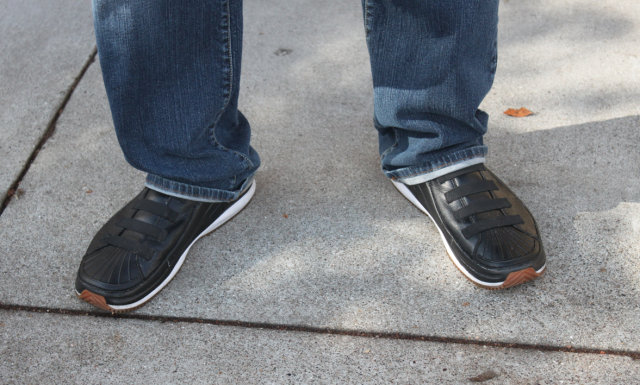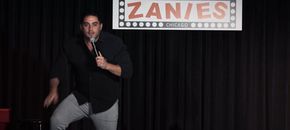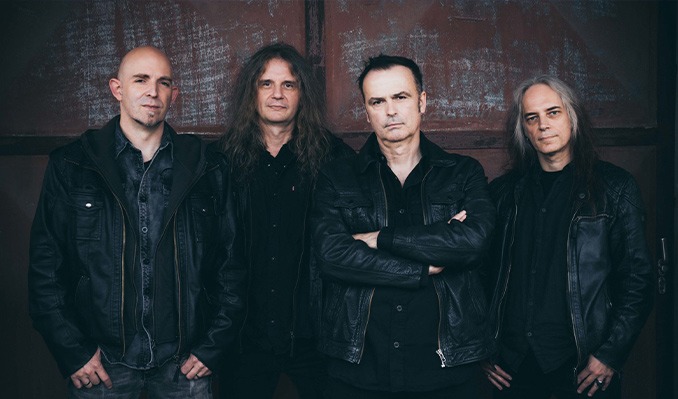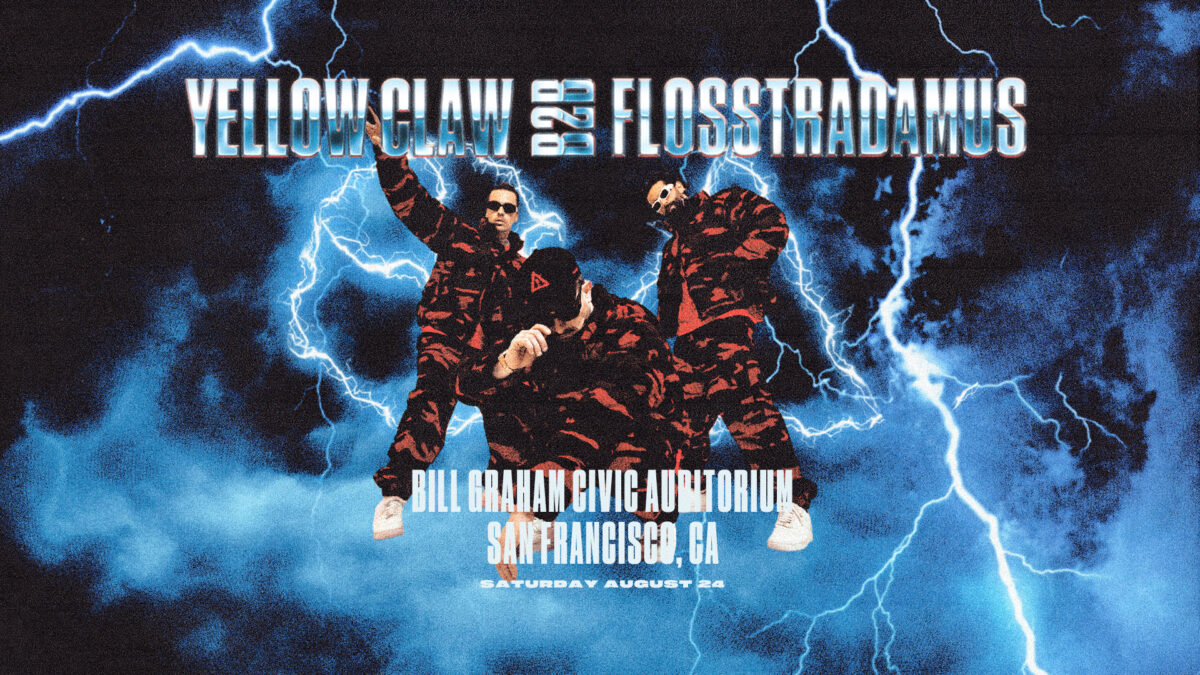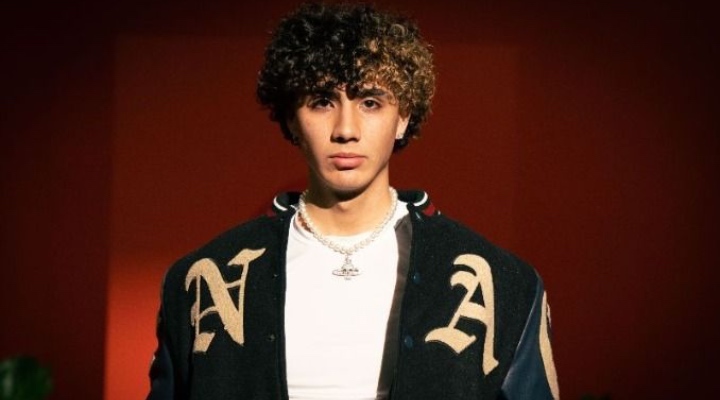Chris Cosentino’s Chef Shoes
At Incanto, Celebrity Chef Chris Cosentino has been knocking the socks off of satisfied customers for nearly a decade. So it’s only fair that now he’s putting shoes on their feet with his own line of Mozo signature footwear. We recently sat down to discuss food, fashion and more.
How did you get involved in the fashion world?
CC: The idea of designing came from being in the business for so long. It came out of just sheer interest in going in a different direction. Almost a year ago, I designed a pair of pants for a local company called the Gluttony Pants. It was something that was just fun. So then came the opportunity to work directly with Mozo. And it’s not a situation like an athlete who just puts his name on a product just to sell it, I have an interest within this business, I am a partner in this. It came from really knowing what worked in shoes, what didn’t. What was comfortable, what wasn’t. Are they heavy? It was a fun way to touch a larger audience and give people a better daily experience.
Does the design process relate in any way to your work in the kitchen?
CC: You design a restaurant, you design a menu, you design your plate. You design flavor profiles with food. There is a flow to food just like there is a flow to the aesthetic of clothing.
What are some of the specific features that make your shoes special?
CC: The design concept was originally based around the restaurant, but it can also be used for everyday. I had my vision of what I wanted shoes to look like. The non-slip sole is unbelievable. It’s unlike anything else I’ve ever had. It’s low to the ground–which, to me was a big deal because the taller your shoe is, the more apt you are of twisting your ankle. It’s all one piece, which allows for comfort and breathability. It’s also really light.
How have you been able to express yourself through your shoes?
CC: When you look at somebody in the kitchen there’s very limited ways in which you can distinguish yourself as who you are: watch, glasses, apron, shoes. Everybody wears a chef coat. For me, I’m a total sneaker whore. I have tons of sneakers. I like shoes and it’s just a natural progression. I’ve blown through every shoe in the market. I wanted something that was lasting and comfortable that don’t look like duck-feet.
You have incorporated an element of sustainability into your cooking–notably with your whole-animal ethic–have you been able to work that ethos into the Mozos?
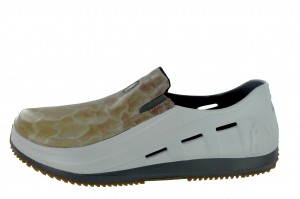 CC: Definitely. The shoes are made in a completely different way than most others. In the production process we have what we call the exoskeleton, which is the base. That is extruded, like a pasta. That’s how the shoe is made. And then what happens is that the soles adhere to the bottom of that and then the vamp–the top piece–is stitched on. Then you slide in an insole. A lot of shoes are made as poured molds. We were able to cut down the production line by more than half, by doing so we create less waste and less byproduct. It’s a much more efficient, much more clean process.
CC: Definitely. The shoes are made in a completely different way than most others. In the production process we have what we call the exoskeleton, which is the base. That is extruded, like a pasta. That’s how the shoe is made. And then what happens is that the soles adhere to the bottom of that and then the vamp–the top piece–is stitched on. Then you slide in an insole. A lot of shoes are made as poured molds. We were able to cut down the production line by more than half, by doing so we create less waste and less byproduct. It’s a much more efficient, much more clean process.
When did they launch?
CC: The first round of shoes came out in the Spring. And we sold out really quickly. My tenderloin shoe is the most popular. The tripe shoe, not as much–but it’s tripe.
What do you want to tackle next?
CC: We are always looking to improve, every day. We’re working on design styles for next year. Maybe doing another shoe or two. I’m looking at honing in on an all-white version of my tenderloin shoe and we’ll see what comes from there.
You’re originally an East Coast guy, what brought you to San Francisco?
CC: When I was in the East Coast, all the produce boxes all said California, all of the wine: California. The beer: California. I had never been there, and my girlfriend at the time said, ‘let’s go.’ Six months later we were in San Francisco. I came here with no job, and I just made it work.
What are the changes you’ve seen?
CC: When I first got here there was a lot of high-end [restaurants]. The super high-ends aren’t opening up as much as they used to. I’ve seen the growth. When I first started at Rubicon there was a lot of really talented people working there all at once. And now they’re all out there doing their own thing. It’s really amazing what came out of that restaurant; it really created an interesting dynamic.
It’s cool to see who’s doing what. It’s always changing fast; that’s just life. We’re seeing people really embrace whole-animal ethic a lot more, we’re seeing people buy more whole animals than they used to—they are more readily available than they used to be. It didn’t really exist when I came out here.
I’m not doing anything new and I’m not reinventing the wheel, I’m just bringing out the dead. I’m trying to save things before they are gone. Cuts of meat are going to be lost. Whether it’s cheese making, jam making, salumi production, whole animal ethic, it’s all old, and everybody just wants to make sure it doesn’t go away.
Where would you like to see the dining scene go?
CC: I’d like to see less fast food and less corporate entities and more chef-run restaurants. It’s getting harder and harder. Burgers are comforting. Pizza, soft serve; people have an understanding for that. None of it is bad, but I’d like to see something different.
What would be your menu’s answer to a ‘comfort food’?
CC: Pork Ragu, it’s very simple and very comforting. It’s the first item I put on the menu nine years ago, and I can’t take it off. Sometimes I wish I could.
Finally, if you could compare yourself to any rock star, who it would be and why?
CC: I don’t see myself like a rock star; I don’t look at it like that. I signed up for the business cause I wanted to cook, cause I love the vibe, the adrenaline and the push of the crowd. I like feeding people and you’re forever learning. Chef ultimately translates to teacher because you can’t do it all by yourself. I’m here all the time. That component is what interests me the most—the learning and pushing it to another direction. Rockstar wise, I don’t consider it that.
It’s good for the food industry, that chefs are looked at in a different way. In some ways its great, in some ways there is a lot of demise. There’s a lot of people in the younger generation leaving cooking school that expect to get on television. Michael Symon, Bobby Flay, Mario Batali, they all worked their butts off for years in the kitchen. Television came way after. I come to work and deal with problems, I touch food, I train people. It’s life, and it’s not as rosy as it’s always portrayed in television.
